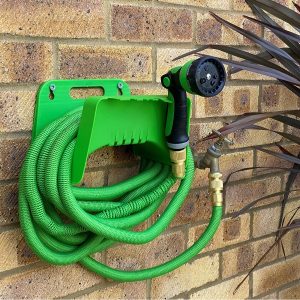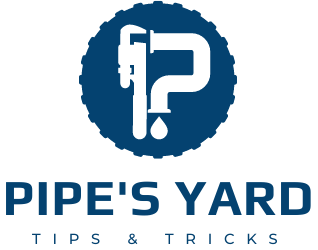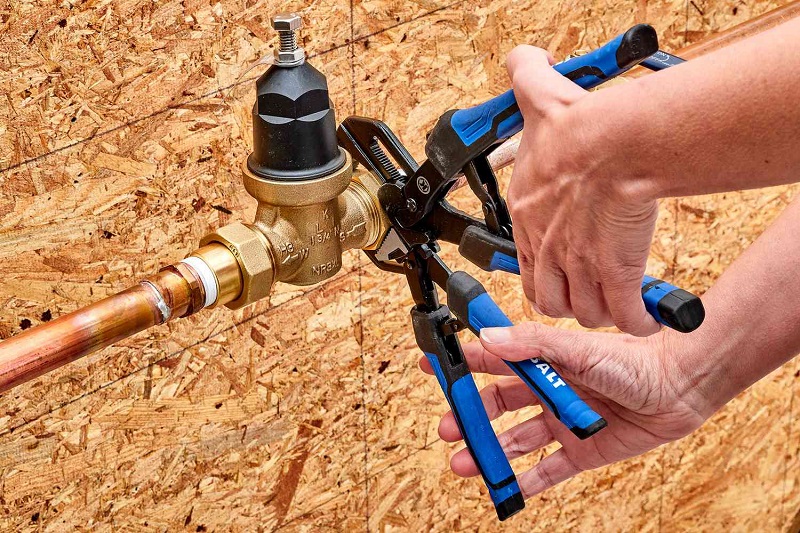No one wants to use a hose pipe with low pressure. This is because such a pipe increases the time it takes to complete tasks. Unfortunately, this problem can be caused by one or a combination of things like clogs, kinks, or leaks.
So then, how to increase hose pipe pressure? One thing you can do is get rid of any kinks or clogs on the hose pipe. You could also check for leaks on the pipe and seal the holes. Additionally, using a high-pressure nozzle attachment or a booster pump with the hose pipe could increase its pressure.
But how does hose pipework, and what causes reduced pressure? Stay right here to find out.
Tips for Increasing Hose Pipe Pressure Table
Below we will discuss what causes reduced hose pipe pressure and tips to increase the pipe pressure.
| Causes of Reduced Hose Pipe Pressure | How To Increase Hose Pipe Pressure |
| Kinks | Remove the kinks |
| Leaks | Seal the leaking points |
| Tighten loose fittings | |
| Replace damaged or missing clamps | |
| Clogging | Clear out the clogs |
| Halfway Opened Shut Off Valve | Close and open the valve fully |
| Install a pump | |
| Add a high-pressure nozzle attachment | |
| Faulty Pressure Regulator | Adjust the regulator |
| Replace the device if it is damaged | |
| Wrong Size Pipe | Switch to a pipe with a smaller diameter |
What Causes Low Pressure in a Hose Pipe?
Low pressure in a hose pipe can make completing tasks like pressure washing a bit tiring. So, here are the causes of this problem.
- Kinks in the Pipe
Kinks are bends or twists in the hose pipe. When the pipe is kinked, this may impede water flow, reducing the pressure. These kinks may occur if you fail to straighten out the hose adequately after unrolling it or fail to roll it correctly.
-
Leaks
Kinks may lead to cracks and leaks in the pipe over time. When the pipe leaks, some fluids will get drained out instead of traveling all the way to the attachments. As a result, you may experience low pressure.
-
Clogs
Hose pipes are also prone to blockages. Clogs from mineral deposits, dirt, and debris may accumulate inside the pipe, reducing water pressure.
- Partially Opened Water Shutoff Valve
This valve controls the flow of water into your home. If it is not fully open, this could affect the pressure in your hose pipe.
- Defective Pressure Regulator
This device is built to control water pressure in your home. It minimizes high incoming water pressure. If the device is faulty, it may lead to low water pressure.
- Wrong Size Hose Pipe
A larger diameter hose pipe creates more space for the fluids to flow through, reducing their velocity. As a result, this causes decreased pressure.
How To Increase Hose Pipe Pressure?
Sometimes, increasing hose pipe pressure is easy, especially when you know the cause of the low pressure. Below are tips on how to do it.
1. Get Rid of Kinks
If the pipe is kinked, straighten it out and leave it outside in full sunlight for a few hours. The heat from the sun will soften the pipe, causing it to expand and lose the kink.
Alternatively, you can use kink splints or braces, which you can buy from your nearest garden store. Or, you could make the splints from old PVC pipes by cutting a small hose. To remove the kinks, follow the steps.
- Step 1: Turn the water supply off.
- Step 2: Remove all fittings from the end of the hose pipe.
- Step 3: Slide the kink splint through the end of the hose pipe and position it where the kink is.
- Step 4: Gently pull on the ends of the pipe until the kinks pop out.
- Step 5: Turn the water supply on and check for pressure.
If the kinks are severe, cut off the damaged parts. Then, reattach the pipes using garden hose fittings like a hose clamp.
2. Fix Any Leaks
Start by checking for signs of fraying or cracking on the pipe, especially around the previously kinked sections. Also, look for missing or loose hose clamps, which could lead to leaks, and replace or tighten them.
If you find leaks, turn off the water supply. Then, get a hose repair kit and patch the leaking sections. Alternatively, you could use a rubber patch or duct tape to close the hole and then secure the patch using a hose clamp.
3. Eliminate Clogs
You can use a garden hose attachment like a hand-held pressure washer to blast any dirt build-up out of the hose pipe. This attachment is built to spray water at high pressure, breaking up the clogs.
A plumbing snake may also work. You simply insert this flexible tool inside the hose pipe and rotate it to break up the clogs. If you don’t have the above tools, you could use a commercial cleaner specifically formulated for clearing out clogs in pipes.
Alternatively, pour a 1/2 cup baking soda into the pipe and add a 1/2 cup white vinegar. Cover the pipe if possible and let the mixture stand in the hose pipe for several minutes. Then, pour at least 5 cups of boiling water down the hose pipe.
4. Adjust Water Pressure
Check if the main water valve is fully open. You can do this by closing it and opening it fully. Then, confirm if your hose pipe’s pressure has improved.
Besides, you can increase the pressure by adjusting the water pressure regulator, located on the main water supply. But first, turn the water supply off. Then, install a water pressure gauge onto the main water supply’s nozzle or the nearest faucet.
Next, check the readings on the pressure gauge. If the readings are below 45 PSI, turn the bolt on the regulator clockwise with a wrench. And as you make the adjustment, keep checking the water pressure on the gauge, making sure not to surpass 70 PSI. If this does not help, you may need to replace the water pressure regulator.
5. Use A Pump
Additionally, you could use a water pressure booster pump, transfer pump, or self-priming pump to increase the pressure. You just attach the end of your hose pipe to a pump using a pipe fitting. Then, plug the water pump into an outlet. Conversely, you can install the pump in the main water supply, causing increased overall pressure in your house.
6. Switch to a Different Hose Pipe Size
A hose pipe with a smaller diameter can help increase fluid pressure. This is because when water flows via a hose pipe, it faces resistance, caused by friction against the pipe’s walls. Consequently, the friction slows down water flow, especially when using a larger diameter pipe, causing a pressure drop.
So, using a hose pipe with a smaller diameter increases water resistance since there is minimal space for it to flow through. This results in higher pressure build-up. Generally, a 5/8-inch hose pipe is the best, depending on the application.
7. Install a Nozzle Attachment
You can use your hose pipe with a high-pressure hose nozzle. The nozzle works by increasing the velocity of the stream. Its functionality is similar to placing your thumb over the end of the garden hose.
Some nozzles boast a 15-degree angle and others 30-degree or 90-degree angle. The greater the nozzle’s angle, the lower the pressure.
Does Hose Pipe Length Affect Pressure?
Yes, the length affects pressure due to increased friction between the inside surface of the hose and the water. The friction causes more flow resistance and energy loss, leading to significant pressure loss.
Generally, more energy is needed to keep the same flow rate when you use a longer hose pipe. In this case, a shorter hose pipe would solve the problem.

However, when working under normal operating conditions and on flat ground, you may not lose much pressure due to increased hose length. Also, if you are using a mist nozzle on your long hose pipe at the end, you will not notice significant pressure loss. This is unless you are running gallons per minute through the pipe.
Conclusion
Using a hose pipe with low pressure can make simple tasks more strenuous to complete. Now, apart from kinks, leaks and clogs can also reduce your pipe’s pressure. Another cause of reduced hose pipe pressure includes a faulty pressure regulator, a long pipe, and a partially opened water shutoff valve.
Nothing to worry about, though! After all, several fixes to this problem exist, like getting rid of the kinks and clogs. Patching the leaky parts on the hose pipe and switching to a pipe with a smaller diameter may also help solve the pressure issues. Additionally, you could increase the pipe pressure by adding a nozzle attachment or adjusting the water pressure regulator.

